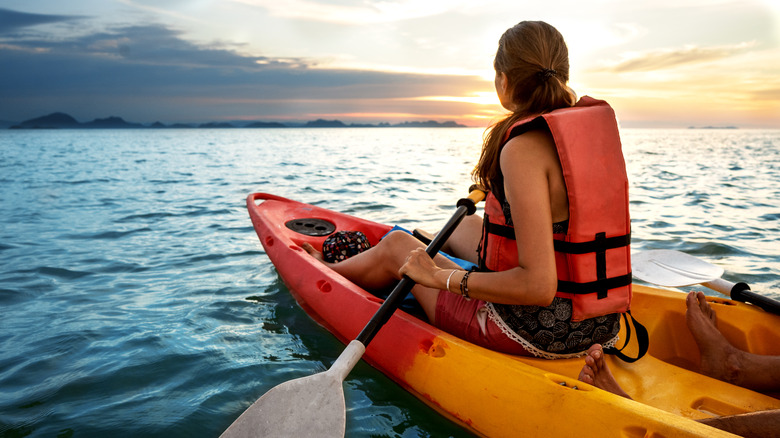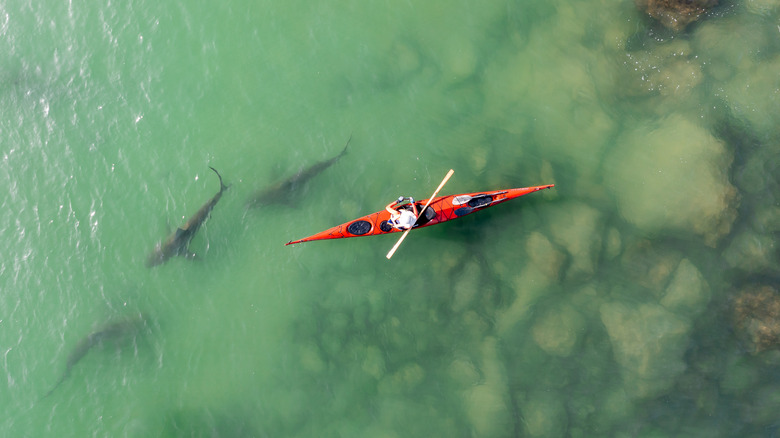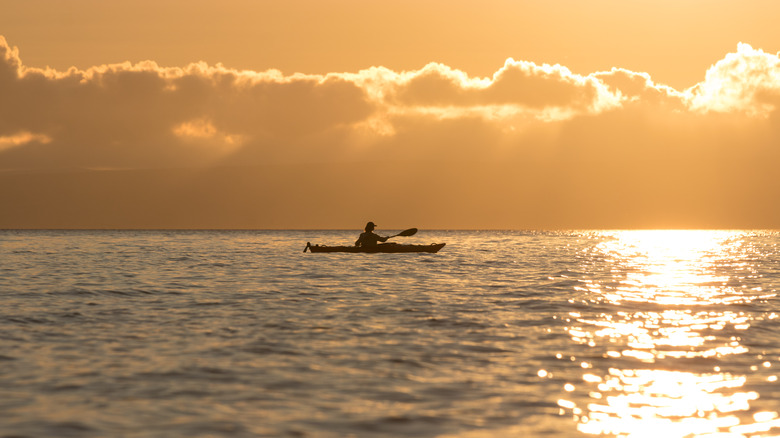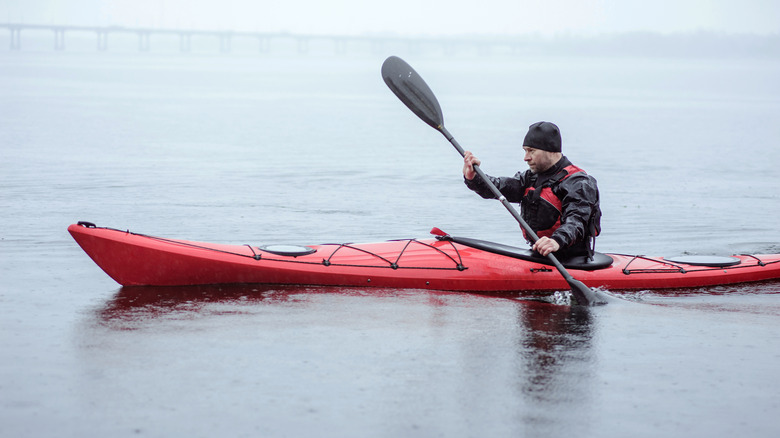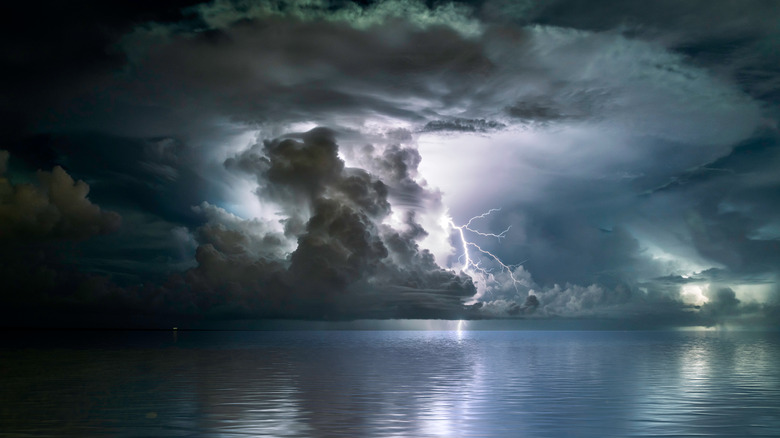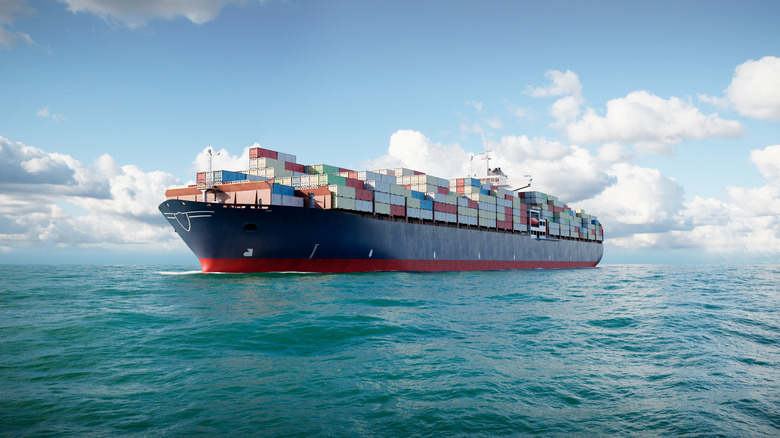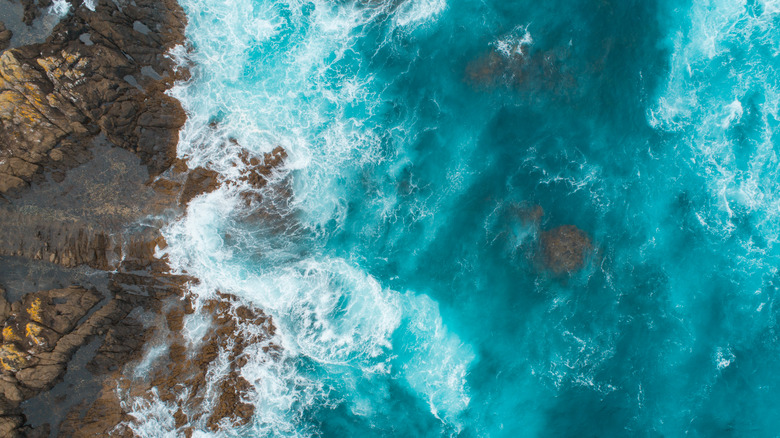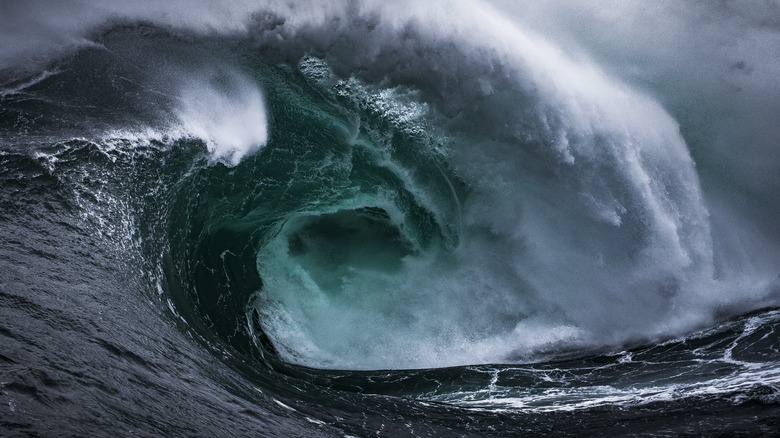7 Dangers Of Ocean Kayaking
If you're trying to find a way to dip your toes into water sports, there are a lot of reasons to try kayaking. Besides swimming, kayaking is one of the best ways to get a good workout on the water, while also reaping some stellar benefits for the mind. There is certainly work involved, both physically and mentally, but kayaking is overall a very go-with-the-flow sport. That not-so-metaphorical flow can change quite rapidly, though, and you should be prepared for some of the dangers that come with kayaking — particularly when you're on the ocean.
It is said that the ocean is a cruel mistress, even if you're kind to her. Between her temperament, unpredictability, and some pretty scary inhabitants, the sea can be just as hazardous as she is beautiful. That doesn't mean you should avoid the ocean, and as long as you are prepared for the worst you'll be able to navigate her waters confidently. Beware of these seven dangers ocean kayakers face, but don't let them keep you from discovering how gorgeous our world is from the water.
1. Sharks
You won't find sharks even in the most dangerous rapids, but you can certainly encounter them in the ocean, as several media outlets have reported. It's tempting to go as deep as you can because kayaks are smaller than other boats and allow people to venture into areas they otherwise won't be able to see.
While you probably won't have to paddle away from a giant sea predator, don't take any chances. Do your research and know if the area you'll be kayaking is home to any sharks at all. Keep in mind that bull sharks are found in shallow waters.
2. There is no land nearby
This is the ocean — it's unpredictable and dangerous. The weather can suddenly change from warm and sunny to cold and extreme.
Even the best swimmers in the world will get tired eventually if they have to push through the water for hours to find land. However, the body can withstand battling big waves and cold ocean water for 6-8 hours a day for weeks in a row, as several long-distance swimmers have proven.
3. Hypothermia
The most likely fatal accident is due to hypothermia following a capsize, which can be caused by wind and/or rough seas and subsequent failure to execute a rescue. If you don't have sufficient rescue equipment or adequate flotation in the kayak, you may be in trouble. Most often people who find themselves in a similar situation are paddling alone and carrying no distress signals.
Other factors that can lead to hypothermia include getting lost or extremely tired, sudden drop in weather temperature, or seasickness.
4. Lightning
Imagine the feeling when there is nothing but sea for miles and you hear the sound of a sudden thunderstorm, and the sounds get louder and louder as it approaches you. You have to get to shore as soon as humanly possible. When you see lightning, count off the seconds until you hear the thunder, and divide that number by 5 to get the distance in miles the lightning is from you, according to San Diego Kayak Club.
Lightning hits the highest objects around, so use low angle stroke. Put your head down. Remove anything that has metal. Don't ever kayak alone. Paddlers should be at least 20-30 feet away from each other.
5. Ships
You have to watch out for other sea-faring vessels, especially big boats in the area. A huge cargo ship may not even see you, and they can be deceptively fast. Never try to paddle across the path of a ship.
Groups should stay close together in order to make it easier for a large craft to notice them and avoid them. Make yourself visible by wearing a brightly colored life jacket and hat. Yellow, orange, and red paddle blades waving up and down will be most noticeable.
6. Tide currents
Currents can take you far away from where you started paddling and you may not even realize it. There are no lanes, after all. Both rip and tidal currents can be a serious challenge for kayakers. If you do get caught up in a rip tide, don't panic — just paddle perpendicular to the shore until you can escape the pull. Tidal currents are a bigger problem, but getting out of one requires the same skills — just more time and energy.
7. Waves
If you don't want waves, go on a river cruise. For sea and ocean kayaking, you'll need a specific boat because it is designed to handle waves. Most people can easily ride waves that are up to 3 feet high. Bigger breaking waves can be dangerous, especially if you don't have a helmet. Paddling in larger waves can result in capsize.
